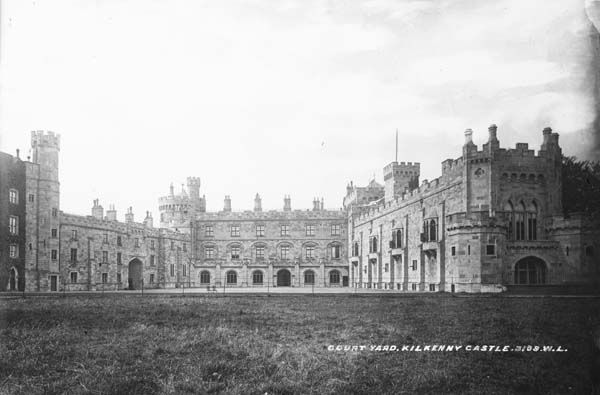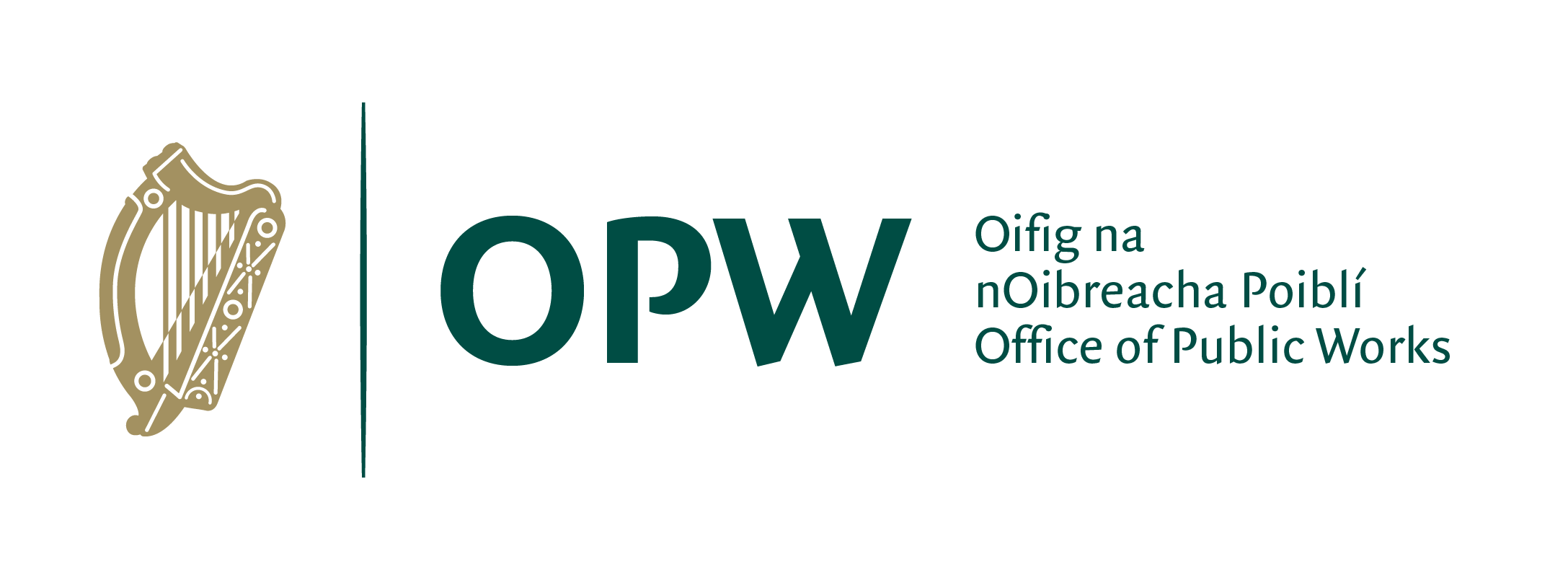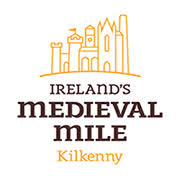Bullets on the Battlements, the 1922 attack on Kilkenny Castle
Kilkenny Castle has a rich and varied history and one of the most dramatic events occurred relatively recently when possession of the castle was contested by Irish troops who were split by their support or opposition to a peace treaty with Britain after the Irish War of Independence.
The terms of the Anglo Irish treaty of 1921 had ratified by Dáil Eireann by a narrow margin in December of 1921 but throughout early 1922 the divisions amongst members of the Irish Republican Army (I.R.A) started to widen and the rhetoric on both sides started to intensify . Individual I.R.A units started to declare themselves for or against the treaty and stockpiling of arms for a potential return to conflict began. In the interest of simplicity this article will refer to the I.R.A troops that supported the treaty as Free State forces and the troops opposed to the treaty as Irregulars.
The attack on Kilkenny Castle must be seen in the overall context of a general slide towards civil war which was occurring across the country during the spring of 1922. On Friday the 28th of April a mixed force of Irregulars began to seize key buildings in and around the centre of Kilkenny, the Anti Treaty forces initially occupied positions in the Bonded Stores and Kilkenny Prison. Word spread of the occupation of Kilkenny and more Irregular forces started to arrive over the weekend and by Monday a number of additional buildings were occupied.
The Irregular troops seized food and other items from stores across the city as they prepared for the inevitable reaction from Free State government forces. By Monday night the 1st of May St Canice’s tower , The Imperial Hotel , the Workhouse and some private dwellings around Greens Bridge and John Street were all occupied by Irregular forces.
Kilkenny Castle wasn’t built at its current location by accident , its commanding views and strategic location which were recognised by its Norman builders ensured that it would be occupied during any potential conflict in Kilkenny.
At 5.30 on the morning of the 2nd of May the Earl and his lady were woken to the sight of 22 Irregular troops in the courtyard of Kilkenny Castle. The commander of the occupying detachment ordered the Lord and Lady of the Castle to evacuate , this order was refused and they retired to their bedrooms on the South side of the castle with approximately 10 members of staff sheltering in the Coal cellars on the North side of the castle .
Meanwhile the strength of the Free State troops in the area had been supplemented by 200 additional troops sent from Dublin by train and had been reinforced with an armoured car and throughout the morning of Tuesday the 2nd of May they began to take up positions opposing the Irregular forces.
The inevitable firing began around 11 am in the vicinity of Greens bridge , the regular troops started to isolate the Anti Treaty positions and fighting was characterised by intense bouts of fire and sniper fire from high points such as St Canice’s and Kilkenny Castle . One by one the Anti Treaty outposts were captured and their occupiers either surrendered and were marched back towards the military barracks or slipped back towards their stronghold of Kilkenny Castle.
It is hard to imagine the terror felt by people in Kilkenny whether they were hiding in their own houses or sheltering in the cellars or bedrooms of Kilkenny Castle as sporadic firing continued throughout the day and the armoured car belonging to the Regular forces sped through the narrow city streets. By 11pm on the night of Tuesday the 2nd an uneasy silence had fallen over the city and people were unsure whether a ceasefire had been reached or it was just a lull in the fighting
Firing recommenced around 10 am the following morning with Kilkenny Castle being the last position held by the Anti Treaty forces. Sporadic firing continued throughout the day but started to intensify around 8pm on the evening of Wednesday the 3rd of May . The armoured car of the Regular forces was put to good use and it crashed through the main gate of the castle and opened fire with its machine gun inside the courtyard. While the main castle building was being seized a brief flurry of fire occurred as troops were spotted approaching through the park , the firing soon ceased however as the Regular troops realised they were firing on their own side.
The occupiers of the Castle realised they were outnumbered and out gunned and quickly surrendered . Before they left the Castle they insisted on shaking hands with the lord and lady before they were marched as captives to the military barracks. Word soon spread that the fighting was over and people spilled out onto the streets of Kilkenny in a mix of curiosity and celebration.
Amazingly despite heavy firing over several days there was no fatalities during the brief conflict although there was several serious injuries and substantial damage to property. The lack of casualties might just be down to good fortune or perhaps because the bitterness and animosity that later characterised the Irish Civil War hadn’t developed at that early stage.
The Castle had sustained substantial damage with a representative from an insurance company estimating the damage at nearly £1000 a considerable sum in its day. As the clean-up of the castle began in earnest the Lord and Lady of the house hosted the commander of the Regular troops Colonel Prout to lunch . Colonel Prout was an American Irish Soldier who had served in the American army during World War 1 and had seen service in the Irish War of Independence and was now a senior figure in the Pro Treaty forces of the National Army, Prout showing a flair for the dramatic even had his troops stage photos of combat for visiting members of the press.
We can establish what Major James Anson George Butler the Earl of Ossory thought of the brief but dramatic siege of the Castle as he recorded the events in his diary, he remembered how at the unreasonable hour of 5.30 I was awakened by a knock at the bedroom door by my butler to inform me that the Republicans had taken the Castle , The diary goes on to record how he saw in the courtyard a heterogenous body of men about 22 in number , dressed in plain clothes , standing by a pile of machine guns , Lewis guns , rifles , boxes of ammunition and some bombs.
The Lord of the house also recalled his decision to stay in the castle during the siege as follows ,
“If we left the castle whatever the outcome of the oncoming battle the probability was that the castle would be looted and burned”
The lack of animosity between the two forces can be seen by the treatment of the captured Irregular forces .The Irregulars were released from confinement on the 5th of May , where broken up into sections by their officers and brought to dinner in various establishments through the city before dispersing to join other Anti Treaty forces throughout Munster .
The Irish Civil war would start on the 28th of June and last for ten months and see nearly a thousand casualties and divide Irish society for generations . It was through either luck or good fortune or a combination of both that the civil war didn’t start in Kilkenny a month earlier.
James Doherty




